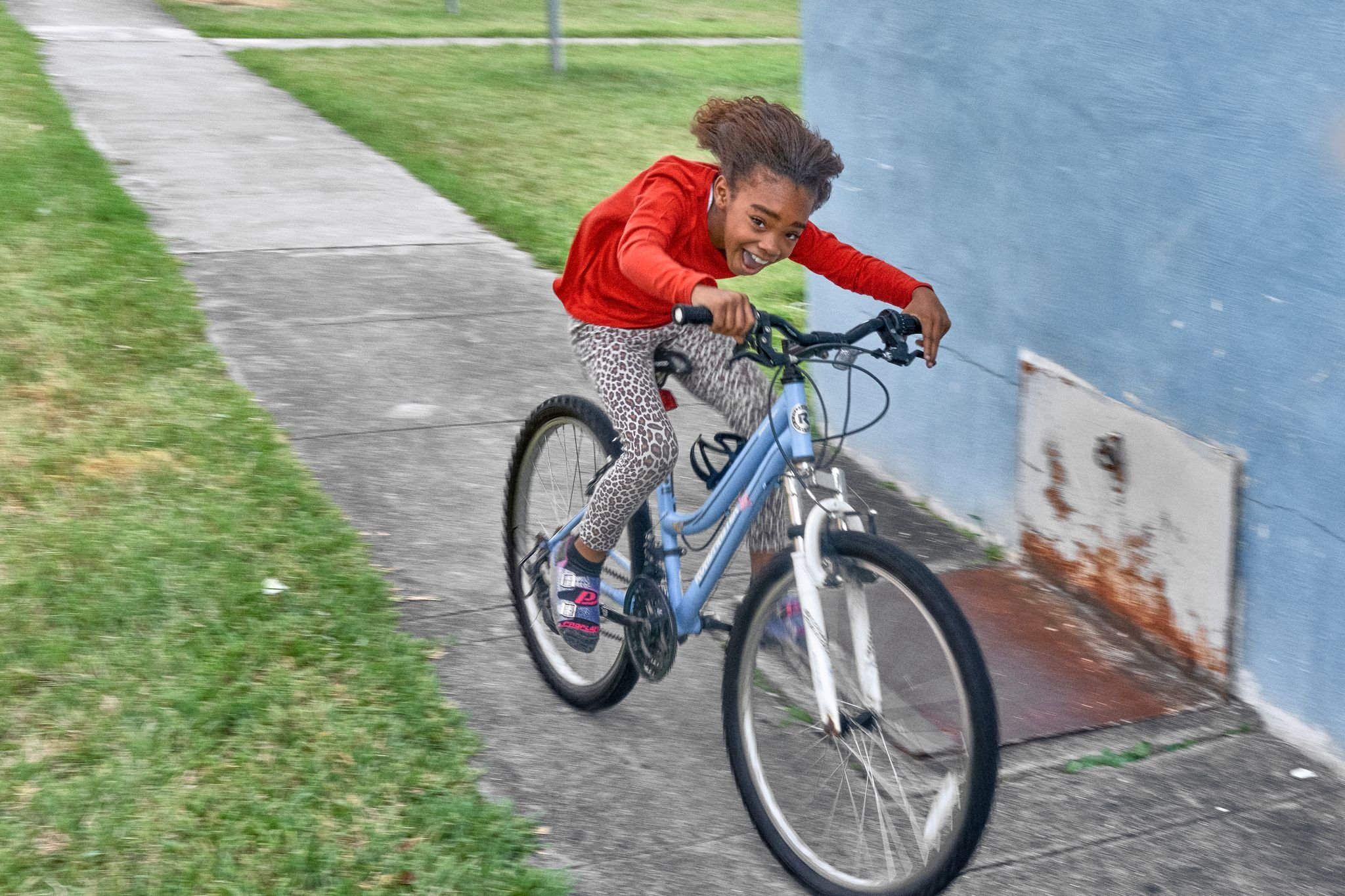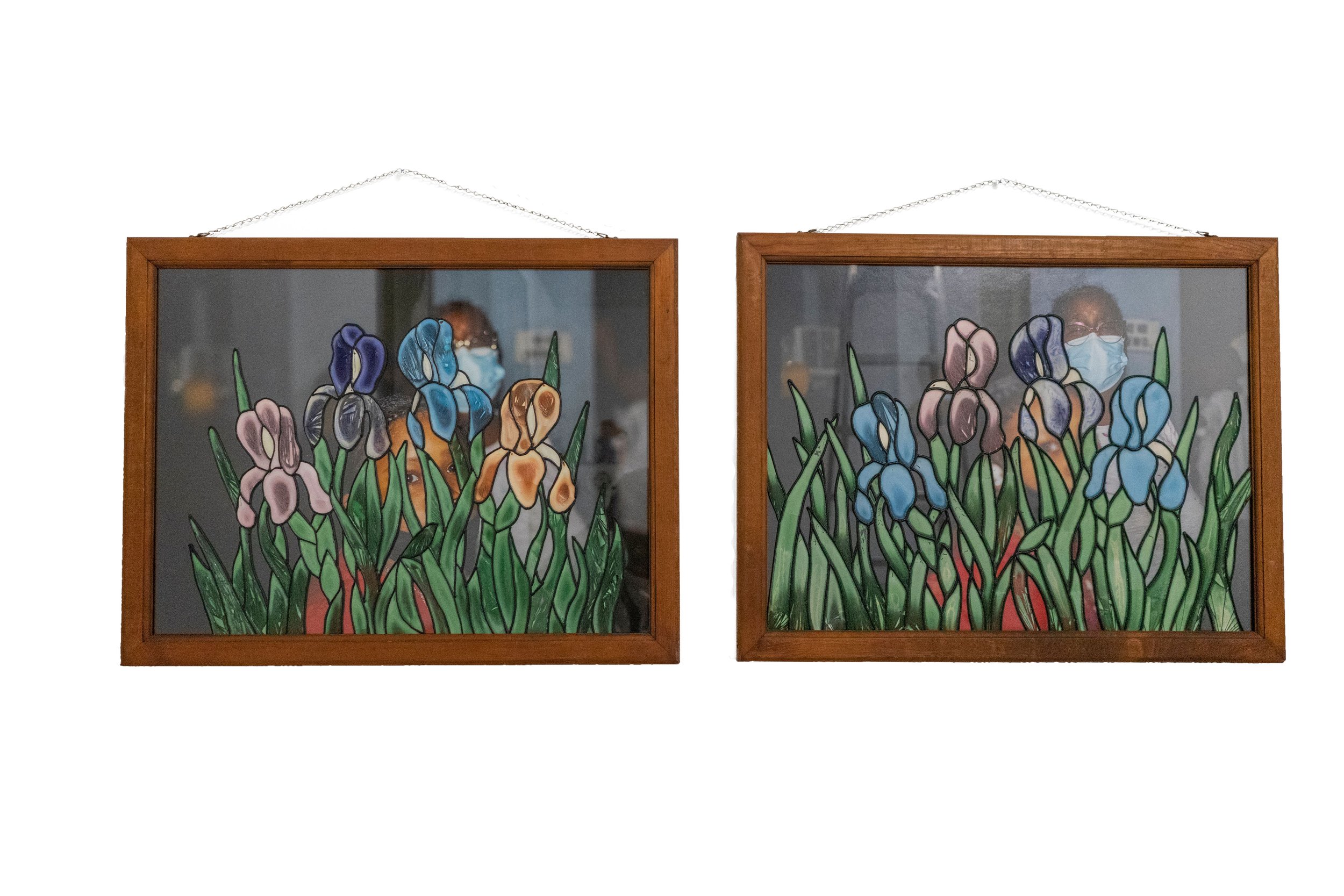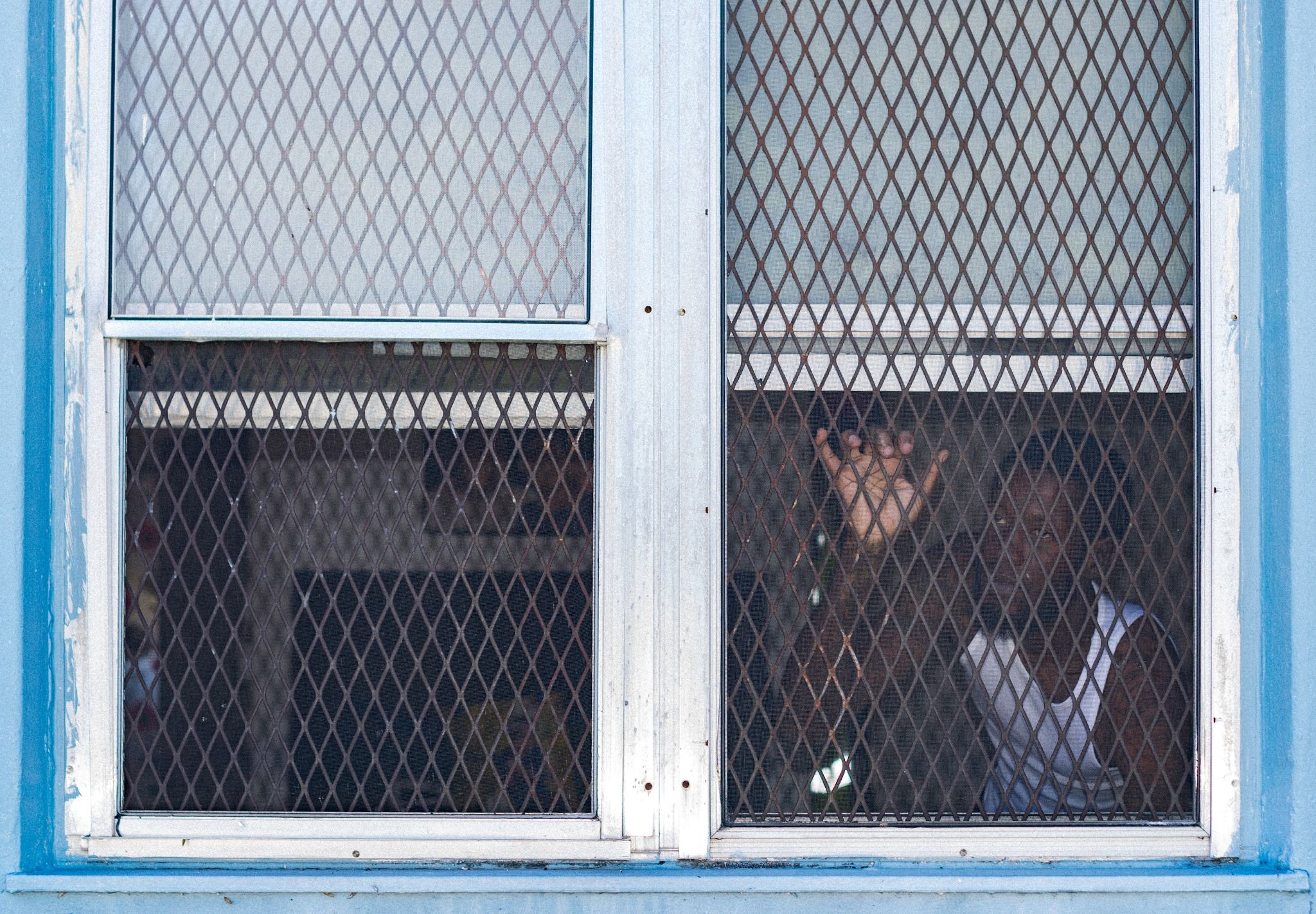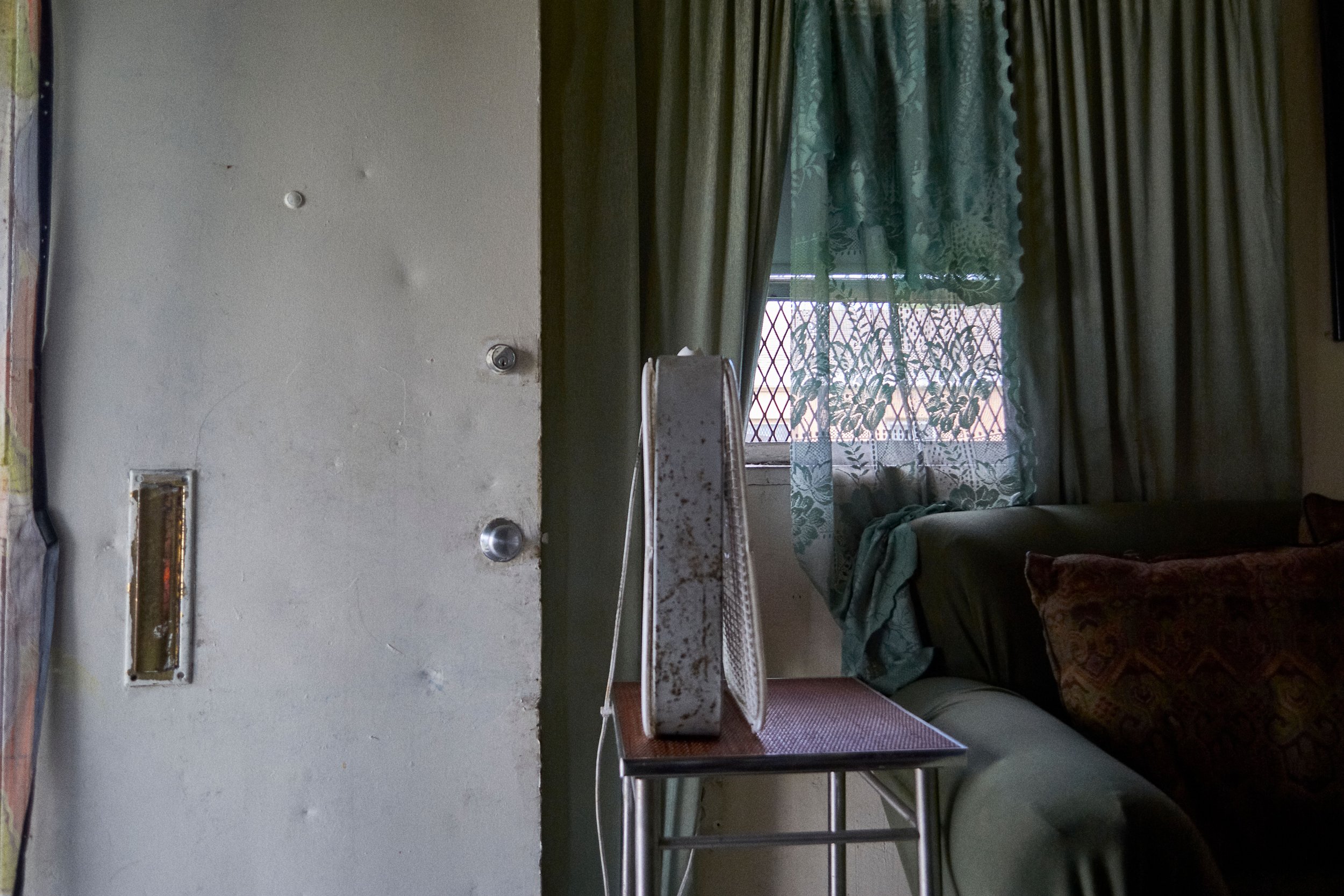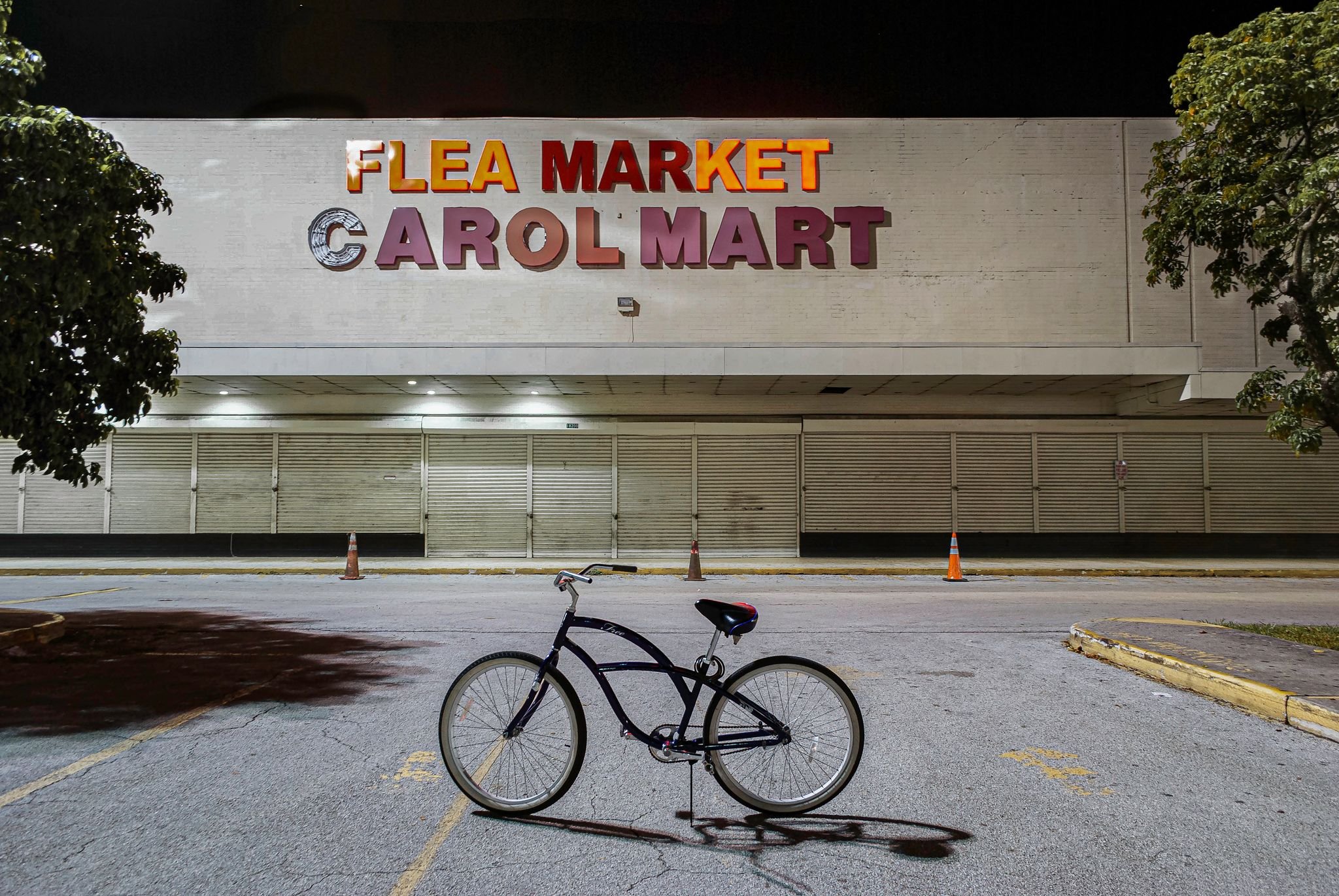Roscoè B. Thické III. Irene’s Legacy, 2020. Archival print on mesh vinyl, enclosed in metal diamond pattern window frame, 50 x 35 in.
Courtesy of the artist and Kates-Ferri Projects, New York
Roscoè B. Thické III
by Amanda Bradley
From a distance, the work of Roscoè B. Thické III has a familiarity that feels like that of an old family album, a record of time that passes by, day in and day out. But for Thické, the camera does more than just chronicle the quotidian: it shapes its own record of history. It collects moments, and the people and places within, in a way that builds a narrative which is deeper than just the instance that stands before us. Each image poses a question, positioning us toward possibility rather than resolution.
Beginning his photographic practice during his time in the military, the camera became a tool that allowed Thické to ask questions of the world, to see it, and to revisit it with unrestricted time. Back then, he never imagined that he would get to see so many other places and engage with so many cultures, but the ability to document those moments and take them back with him started to reshape his perspective and understanding of his home in Miami.
His body of work 1402 Pork n’ Bean Blue gives us a viewing of family and legacy.1402 was home to the matriarch of Thické’s family, his grandmother Irene, for over 60 years. Now that it is no longer inhabited and slated for redevelopment, he shares with us the intimacy of a place that generations of his family once called home. Thické leaves us to consider what stands before us, granting it as much weight as what may come next.
Irene's Legacy (2020) is a portrait of his grandmother set behind a window grate taken from 1402. With this work, Thické honors Irene, but in positioning her behind the window grate, he hints at the complexity of home as a space that both protects and confines. In Missing Matriarch (2021), we are also presented with a portrait:a bright yellow chair is positioned in the corner of the porch marking the space where Irene would sit for all the family gatherings over the years, watching as the next generations continued to grow up. This image, photographed from slightly below, as if we are a child getting ready to walk up the steps to enter the home, places Irene and the space she once inhabited in reverence.Irene’s presence inIrene’s Legacy, as much as her absence in Missing Matriarch (2021), positions us and our understanding of 1402 in reference to her.
The narrative Thické builds with his camera tethers this place and this home to Irene’s life, telling a story about family heavily embedded with generations of tradition, identity, memory, and possibility. Images serve as both artifacts and imagined futures, not quite answering the question of what comes next. We are reminded of the value of time through this relationship. As Carlo Rovelli writes in The Order of Time (2018): “This is time for us. Memory. A nostalgia. The pain of absence. But it isn't absence that causes sorrow. It is affection and love. Without affection, without love, such absences would cause us no pain. For this reason, even the pain caused by absence is in the end something good and even beautiful. Because it feeds on that which gives meaning to life.”
Photography exists in the space between literature and cinema. It finds a way to evoke what words can’t describe, pulling an instance out of time and capturing it for endless contemplation. Thické’s use of photography creates tactility for the viewer. Can you feel the hot and humid day seeping through the house in Flow (2020)? A fan is set up to circulate any breeze that passes the threshold of the front door into the living room. In its stillness, his images extend time, granting us the opportunity to be present.


